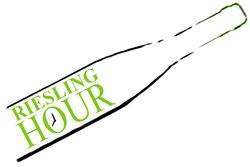By Evan Dawson, Managing Editor
 Many of you will taste a wide selection of 2010 Finger Lakes rieslings this evening as a part of the inaugural Riesling Hour. It's a marketing effort that seeks to bring more wines to more people, generating buzz for the most recent vintage.
Many of you will taste a wide selection of 2010 Finger Lakes rieslings this evening as a part of the inaugural Riesling Hour. It's a marketing effort that seeks to bring more wines to more people, generating buzz for the most recent vintage.
We don't want to color your thoughts about what you'll taste, and every group will have a slightly different pack of wines. But here are some answers to questions that have already come up.
Are the wines ready?
It's a fair question. At least one winery opted out of the event, saying they wanted a bit more bottle age for their rieslings. But many wineries released these rieslings weeks or even months ago, not waiting for this event. So most would say that the wines are ready for consumption.
What was the 2010 vintage like?
Remember 2009? Just imagine the polar opposite. This was the longest growing season in the history of the region; it started with 65-degree days in March, no killer spring frost, and cruised through October.
But it's very different when compared to 2007. Whereas 2007 was hot and dry, 2010 was simply warm, long, consistent, but ending with a wet kick. In fact, some heavy September rains complicated the harvest, but certainly didn't ruin it. Those rains gave winemakers and growers more to think about. Some went ahead and picked shortly after the rains, but many waited, allowing the vineyards to dry out and the berries to get a bit smaller.
One thing is certain: As a whole, riesling was picked earlier than ever before in 2010. But some wineries picked very early, seeking to maintain natural acidity, and others let the grapes continue to develop, risking a drop in acid to gain flavor complexity.
So did wineries actually have to add acid?
Some did, yes. Many did not. Again, it all depends on when the grapes came in, and what style the winemaker was seeking. For tonight's tasting, it's good to simply ask the winery — many will have representatives online to answer questions.
Which style thrived?
The early tank and bottle tastings gave the edge to dry rieslings. Remember that in 2009, many wineries left more residual sugar than ever before to balance that tingling acidity. In 2010, the acidity was lower, and the range of flavors allowed winemakers to take the wines quite dry while retaining some texture.
That's not to say that all dry rieslings from 2010 are good - some tank samples were thin and simple, and some of the richer, sweeter bottlings were simply outstanding.
We look forward to hearing your take on the wines. Join us in the comments for that conversation.
